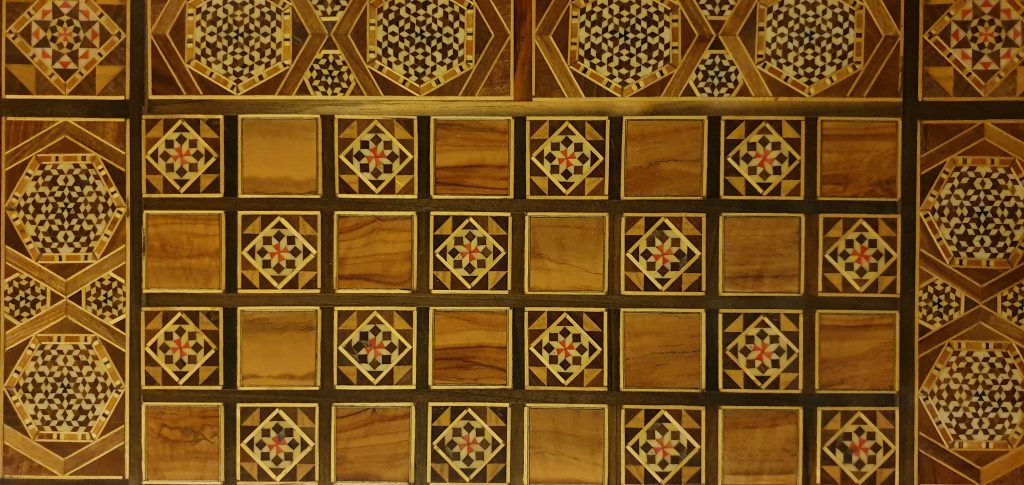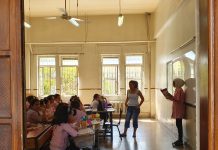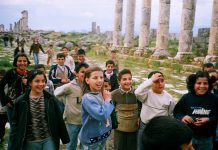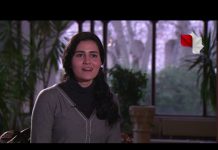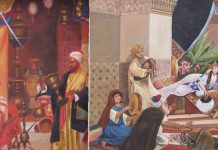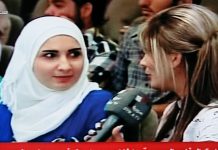In his 1988 LA Times article below, journalist and columnist Charles Wallace captured beautifully Syrians’ love for the game of backgammon; the magic of it.
(However, in 2020, it should be noted that today if Syrian women don’t enter a cafe, it is because they choose not to, not because they dare not.)
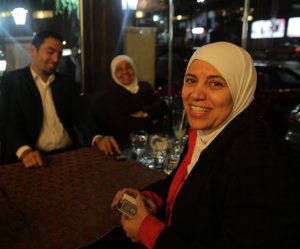
This game of backgammon in Beit Jabri was played one day in September, 2019.
Susan Dirgham
First published in LA Times, Feb 4, 1988. Written by By CHARLES P. WALLACE
Love of Backgammon : To Arabs, It’s the 1 Game That Counts
DAMASCUS, Syria — A blue haze fills the Rawda cafe and is constantly replenished by elderly men puffing on the narghile, an elaborate water pipe that begins with a rubber hose and ends at a thumbnail-size ember of tobacco.
Waiters in dirty gray aprons move among the tables, precariously balancing tiny cups of strong Turkish coffee, glasses of heavily sweetened Arab tea and tongs holding heated tobacco coals for the pipes.
The Rawda, steps away from the Parliament building, is filled with the sound of boisterous conversation and clattering dice.
The men at the Rawda–women dare not invade an Arab cafe–are middle-aged and beyond, whiling away a winter’s afternoon. The scene is commonplace throughout the Arab world: men gathered for coffee and gossip, relaxing with a smoke and a game of taawli —backgammon.
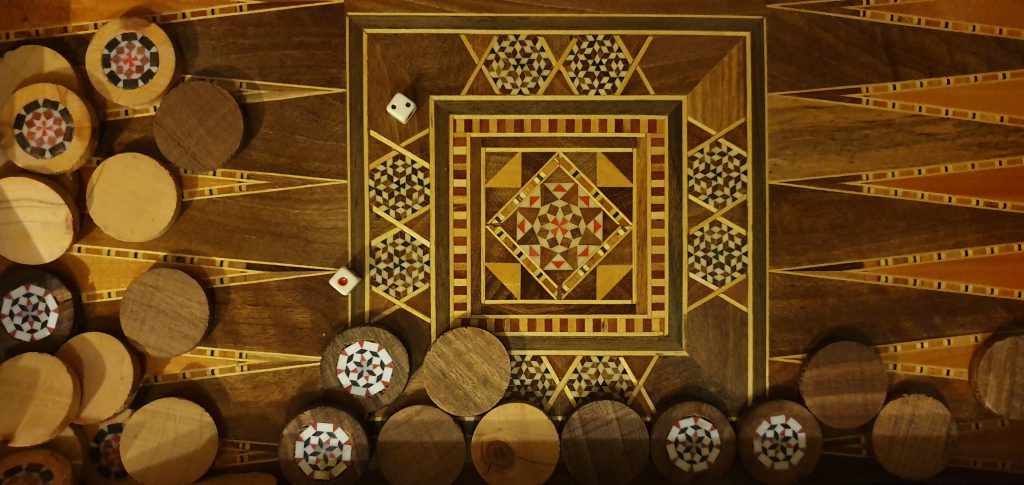
Centuries-Old Pastime
While other games–chess, bridge, even poker–have made inroads from time to time, backgammon has been for centuries the pastime of the Middle East. Rare is the house in the Arab world without the carved wooden board and counters.
“I have played every day for 40 years,” Kamal Bay, a retired government employee, said as his hands moved from dice to counters in a practiced blur.
Sadd Saleh, Bay’s elderly and long-suffering opponent, interjected: “It’s a tradition in Syria. I couldn’t imagine life without it.”
Recently an antique dealer named Samir Nassan decided to have a competition among the best players in Damascus, and to his astonishment, 1,500 men showed up at his Ottoman-era house in Damascus’ old city.
Umpire Rolls the Dice
The competition involved relays of 44 men at a time, with an umpire rolling the dice for everyone. It was such a success that a national championship is being organized.
“Every Arab is an expert at backgammon,” Nassan said. “Chess is too hard. Backgammon is more amusing and, besides, you can talk while you play.”
Backgammon is widely regarded as the oldest board game in the world. Evidence of the game found at a Middle Eastern archeological site is believed to date from 3000 BC.
The game was known throughout the early Near East and Persia as nard , and it is similar to the Roman game known as ludus duodecim scriptorum– the “game of 12 lines,” on which the Emperor Nero is said to have wagered vast sums of money. It soon became known as tabula , or table, a name it retains in Arabic– taawli . The French, delighted by the sound of the dice against wood, called it tric-trac.
The first known European book about games, published in 1283 by the Spanish king known as Alfonso the Learned, contains a drawing of six noblemen and a king playing backgammon. The game was taken to Spain by the Arabs.
Alfonso remarked that “God has intended men to enjoy themselves with many games,” but by the Middle Ages, priests were inveighing against backgammon as the devil’s work.
Although many players have forgotten, Arabs are remarkably aware of backgammon’s origins in superstition. The 24 points on the board refer to the hours of the day; the 12 points on each half of the board denote the months of the Zodiac; the 30 counters refer to the days of the month; the two dice for day and night, and the number 7, the most common combination on the dice, for the days of the week.
“For some reason, backgammon became the rage of the Ottoman Empire,” said Afif Bahnassi, Syria’s director of antiquities. “It really spread across the Arab world with the Turks, and it stayed behind when they left.”
The long history of the game is evoked today in the tiny cafes of Damascus, where men lapse into Persian and Turkish to call out the numbers on the dice: in Turkish bir , iki , say , dourtz (one, two, three, four).
In the West, most backgammon enthusiasts play a single game, the rules of which were formalized in the 18th Century by the Englishman Edmond Hoyle. The Arabs refer to this game as franjieh , or Frankish, apparently an unflattering reference to the fact that the game was played by Christian Crusaders invading the Holy Land.
In the Arab world, there are several popular variations, including mahbouseh, or prisoner (a piece is held captive); magribieh , a complicated variation of prisoner, and Yehud , or Jewish, a mystifyingly named variation for children.
In the Middle East, backgammon is very much a part of an oral tradition. There are no published guides on winning, or even any how-to books.
“It’s something you don’t learn,” said Najib Saleh, who has been playing for 45 years. “We just get used to it. After a while you develop your own strategy. If you don’t, you’ll just keep losing.”
Koran Forbids Betting
A recent American visitor to a backgammon cafe was told that betting is not permitted because it violates not only a municipal ordinance but also Islam’s holy book, the Koran. But everyone in the cafe winked at both.
Backgammon has a special place in the history of Damascus. For the last two centuries, the city’s craftsmen have produced a unique Damascene style of woodworking that has become famous throughout the Near East.
The best examples are exquisite combinations of rosewood, pistachio and lemon wood, intricately worked with mother-of-pearl to produce the geometric designs.
Typically, the board is made in the form of a box. When opened it becomes a square, with one side used for backgammon and the other for chess. The board also has been incorporated into elaborate tables, which may be covered with baize for card games.
In the old city of Damascus, Arabs from the oil-rich Persian Gulf states come to sip tea and haggle over boards in the back-lane carpentry shops, where they are still made by hand and sell for up to $700.
“Backgammon has the advantage of being endlessly original,” Nassan, the antique dealer, said. “In 25 years of playing, I’ve never played the same game twice, which is more than you can say for most things in life.”
